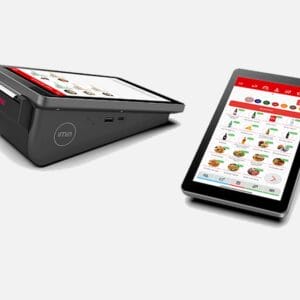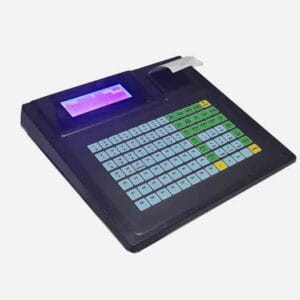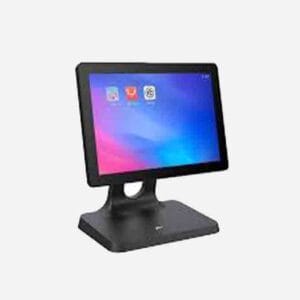Giribrothers.com
A billing terminal is a point-of-sale (POS) device used in various business settings to facilitate the process of generating invoices, recording transactions, and managing payments. Here's an outline to explore the features and applications of billing terminals:
1.Introduction to Billing Terminals
Product list
A billing terminal is a point-of-sale (POS) device used in various business settings to facilitate the process of generating invoices, recording transactions, and managing payments. Here's an outline to explore the features and applications of billing terminals:
1.Introduction to Billing Terminals
- Define the billing terminal purpose and role of billing terminals in commercial transactions.
- Highlight their importance in streamlining the billing and payment process.
- Explore the billing terminal hardware components of billing terminals, including the display, keyboard, card reader, and receipt printer.
- Discuss the billing terminal importance of each component in the overall functionality of the terminal.
- Detail the billing terminal software capabilities of billing terminals, including invoicing, inventory management, and payment processing.
- Discuss how user-friendly interfaces enhance the efficiency of operations.
- Explore the connectivity options of billing terminals, such as Ethernet, Wi-Fi, or Bluetooth.
- Discuss how connectivity contributes to real-time data synchronization.
- Discuss the various payment methods supported by billing terminals, including credit cards, debit cards, mobile payments, and cash.
- Explore any additional features, such as contactless payments.
- Highlight security features integrated into billing terminal, such as encryption, secure PIN entry, and compliance with payment card industry standards.
- Discuss the importance of protecting customer and transaction data.
- Discuss the receipt generation and printing capabilities of billing terminal.
- Explore customization options for receipts, including branding and promotional messages.
- Discuss the integration capabilities of billing terminal with broader point-of-sale (POS) systems.
- Explore how seamless integration enhances overall business operations.
- Explore features related to inventory management, including product tracking, stock level monitoring, and automatic reorder points.
- Discuss how these features contribute to efficient business management.
- Discuss the billing terminal reporting and analytics capabilities of billing terminal.
- Explore how businesses can derive insights from transaction data for decision-making.
- Discuss the integration of billing terminal with CRM systems.
- Explore how businesses can use customer data to enhance the overall customer experience.
- Highlight the billing terminal importance of user training for efficient utilization of billing terminals.
- Discuss the availability of customer support and resources for billing terminal troubleshooting.
- Discuss the billing terminal importance of billing terminals complying with industry and regulatory standards.
- Highlight certifications and adherence to data protection laws.
- Discuss how billing terminal can adapt to different business models and scale with the growth of the business.
- Explore options for businesses of various sizes and industries.
- Share testimonials from businesses that have successfully integrated billing terminals.
- Provide insights into real-world experiences and benefits.
- Discuss emerging trends and potential future developments in billing terminal technology.
Some subtopics that you might consider exploring in-depth for billing terminals:
- Security Measures in Billing Terminals:
- Explore the various security features implemented in billing terminals, including encryption, tokenization, and secure PIN entry, to protect sensitive customer and financial data.
- Contactless Payment Technology:
- Delve into the billing terminal technology behind contactless payments and how billing terminals support NFC (Near Field Communication) for quick and secure transactions.
- Barcode Scanning in Retail Billing:
- Examine the billing terminal role of barcode scanners in retail billing terminals, their technology, and how they enhance the efficiency of the checkout process.
- Mobile Payment Integration:
- Explore how billing terminals integrate with mobile payment options such as Apple Pay and Google Pay, providing customers with convenient and secure ways to make transactions.
- Receipt Customization and Branding:
- Discuss the importance of customizable receipts in billing terminals, allowing businesses to reinforce their brand identity and include promotional messages.
- Cloud-Based Billing Solutions:
- Explore the billing terminal advantages of cloud-based billing solutions, including real-time data synchronization, accessibility from multiple locations, and scalability for growing businesses.
- Biometric Authentication in Billing Terminals:
- Investigate the use of biometric authentication, such as fingerprint or facial recognition, in billing terminals for secure user access and transactions.
- Wireless Connectivity Options:
- Discuss the various wireless connectivity options in billing terminals, such as Wi-Fi and Bluetooth, and how they contribute to flexibility and mobility in business operations.
- Integration with Point of Sale (POS) Systems:
- Explore how billing terminals seamlessly integrate with POS systems, allowing for a comprehensive solution that covers transaction processing, inventory management, and sales reporting.
- Data Analytics for Transaction Insights:
- Discuss how billing terminals contribute to data analytics, providing insights into customer behavior, popular products, and overall sales performance.
- User Interface Design for Billing Terminals:
- Explore the billing terminal principles of user interface design in billing terminals, focusing on creating an intuitive and user-friendly experience for both customers and staff.
- Offline Operation and Transaction Logging:
- Discuss the billing terminal importance of offline operation in billing terminals, ensuring continued functionality during network issues, and how transactions are logged for later synchronization.
- Multi-Currency Support in Global Transactions:
- Examine how billing terminals accommodate multi-currency transactions, catering to businesses with international customers and enhancing the customer experience.
- Sustainable Practices in Billing Terminal Design:
- Explore how billing terminal manufacturers incorporate sustainable practices in design, including energy-efficient components and eco-friendly materials.
- Customer Display Technologies:
- Discuss the billing terminal technologies used in customer displays on billing terminals, including LED, LCD, or touchscreen displays, and their impact on the customer experience.
- Integration with E-commerce Platforms:
- Explore how billing terminal seamlessly integrate with e-commerce platforms, allowing businesses to manage both online and offline sales channels efficiently.
- Innovations in Billing Terminal Technology:
- Investigate recent innovations in billing terminal technology, such as AI-powered features, augmented reality (AR), or other advancements shaping the future of transaction processing.
- Compliance with Payment Card Industry (PCI) Standards:
- Discuss the importance of billing terminal complying with PCI standards to ensure the secure processing of credit card transactions and protect against data breaches.
- Accessibility Features for Inclusive Transactions:
- Explore the billing terminal design considerations and features that make billing terminals accessible to individuals with disabilities, ensuring inclusivity in transaction processing.
- Case Studies on Successful Billing Terminal Implementations:
- Present case studies showcasing businesses that have successfully implemented billing terminals, detailing the challenges faced, benefits realized, and lessons learned.
Product list
- Point of Sale (POS) Integration:
- Seamless integration with POS systems for efficient and accurate transaction processing.
- Touchscreen Interface:
- User-friendly touchscreen interface for easy navigation and transaction input.
- Multiple Payment Options:
- Support for various payment methods, including credit cards, debit cards, mobile payments, and cash.
- EMV Chip Card Reader:
- Integrated EMV chip card reader for secure and chip-enabled card transactions.
- NFC and Contactless Payments:
- Support for Near Field Communication (NFC) and contactless payment methods for faster transactions.
- Receipt Printing:
- Built-in receipt printer for generating physical receipts for customers.
- Barcode Scanner:
- Capability to scan barcodes for quick and accurate item entry and inventory management.
- Invoice Generation:
- Ability to generate invoices for larger transactions or business-to-business sales.
- Cash Drawer Integration:
- Integration with a cash drawer for secure storage of cash received during transactions.
- User Authentication:
- User login functionality with secure authentication for authorized access.
- Refund and Void Transactions:
- Capability to process refunds and void transactions with proper authorization.
- Sales Reporting:
- Reporting features billing terminal that provide insights into sales data, transaction history, and popular items.
- Inventory Management:
- Integration with inventory management systems to update stock levels in real-time.
- Customer Relationship Management (CRM) Integration:
- Integration with CRM systems to track customer purchases and preferences.
- Customizable Receipts:
- Options to customize receipts with business logos, promotional messages, and contact details.
- Tax Calculation:
- Automatic tax calculation based on the location and type of products or services.
- Multi-Currency Support:
- Support for transactions in multiple currencies for businesses with international customers.
- Wireless Connectivity:
- Wireless connectivity options such as Wi-Fi or Bluetooth for flexibility in setup.
- Security Features:
- Security measures such as end-to-end encryption, PCI compliance, and secure PIN entry.
- User Permissions and Roles:
- Granular user permissions and role-based access control for security.
- Offline Mode:
- Capability to operate in offline mode for uninterrupted transactions during network issues.
- Customer Display:
- External display for customers to view transaction details and amounts.
- E-commerce Integration:
- Integration with e-commerce platforms for businesses with both physical and online presence.
- Energy Efficiency:
- Energy-efficient design to reduce power consumption and operational costs.
- Compliance with Regulatory Standards:
- Adherence to industry and regulatory standards to ensure legal compliance.







somnath –
Reviews Across Web
https://www.facebook.com/giribrothers1973/